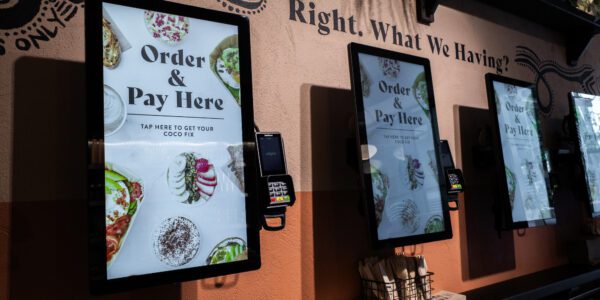7 incredible benefits of using self service kiosks in your restaurant
Self serve kiosks aren’t just for McDonalds any more. Discover the financial and operational benefits of kiosks and why they might be right for your restaurant.

What do your customers really think about calorie labelling? Can nutritional transparency really help you stand out from the competition? What are the latest trends and how can you stay ahead of the curve?
On 6th April 2022, calorie labelling on menus became mandatory for operators in England with over 250 employees. The government legislation requires operators to provide calories for individual menu items and display the statement ‘adults need around 2000 kcal a day’. The law is part of a wider government strategy to tackle obesity and promote healthy eating.
In our recent webinar ‘How to tackle calorie labelling: the masterclass for ambitious operators‘, we covered what the legislation means for the industry, how to comply and how to get ahead of the transparency trend. We also had a live Q&A, which we’ve included the answers to below.
The legislation requires calories to be displayed at the point of choice. That means calories must be clearly labelled on physical menus, online menus, food delivery platforms and next to the physical item if it’s being chosen from a display stand.
The legislation only affects businesses with more than 250 employees – small businesses are not required to display calories legally regardless of whether they sell online or in-store. The question for small operators is if they want to get ahead of consumer expectations by proactively sharing calories.
There are three ways to calculate your calories. One option is to have your meals tested at a lab to determine the chemical make-up. While this is a great option for accuracy, it can be expensive and isn’t ideal if you have seasonal menus that change frequently.
Another option is to work out the calories yourself using the nutritional information supplied by your suppliers and distributors. You can then work out the breakdown of ingredients for each dish.
Alternatively, you can use data from a recognised data source like McCance and Widdowson’s Composition of Foods. The dataset is updated every year, and covers all nutritional information including calorie values. You can download the list on the government website.
The legislation applies to organisations with over 250 staff in England. So if you are an international company, and you have 250 employees in England, you will need to display calories in all your English locations (online or in-store) according to the new legislation.
The legislation applies to the out of home sector which typically sells non-prepacked food designed for immediate consumption on or off-premise such as restaurants, cafes, pubs, supermarkets and takeaway outlets. Food and drink that is prepacked for direct sale including sandwiches, salads and cakes, fall within the scope of Natasha’s Law which requires operators to prove full ingredient labelling on the packaging.
You must provide accurate calories for all menu items, according to the legislation. This can be complex if you have multiple customisation options, however, you must provide the exact breakdown for all variants.
As an operator, it’s down to you to determine portion size. This could be based on servings such as a ladle, scoop or pot. For example, a portion of ice cream could be determined as two scoops, and a serving of salad could be based on the pot size. Calorie information must be accurate and displayed at the point of choice. For a buffet or carvery, you could display this information on a card next to the menu item or dish.
The legislation allows a 20% plus or minus margin of difference between actual and declared calorie values. While operators should aim to be as accurate as possible, enforcement officers will consider factors that may affect accuracy. For example, for items that are self-service, using measures such as ‘per scoop’, the exact portion size may vary more significantly than for portions that are prepared by staff.
If you’d like some extra guidance, download our Calorie labelling guide to find out how to prepare and stay ahead of the curve.
Self serve kiosks aren’t just for McDonalds any more. Discover the financial and operational benefits of kiosks and why they might be right for your restaurant.

Learn the benefits of centralising your hospitality data, and how easy-to-read, real-time reports will help you scale your business.

Innovating Hospitality: Lessons from the Retail Sector
